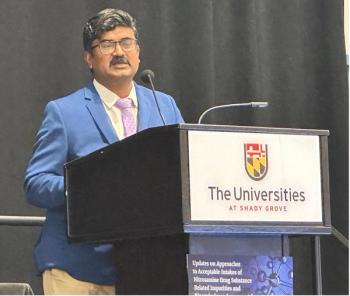
New Sample Preparation Method More Efficiently Purifies Oligonucleotides
A recent joint study between the University of Ferra and YMC ChromaCon led an effort to a new approach to more efficiently purify oligonucleotides.
Scientists from the University of Ferrara in Ferrara, Italy, and YMC ChromaCon in Zürich, Switzerland created a new approach to oligonucleotide purification, combining two purification steps into one. Their process and testing methods were published in the Journal of Chromatography A (1).
Oligonucleotides (ONs) are short DNA or RNA molecules, such as antisense oligonucleotides or aptamer RNAs, that modulate gene and protein expression (2). Unmodified ON sequences are naturally vulnerable to degradation when introduced into biological sequences; in response, advancements have been made to enable chemical modification to provide nuclease stability, thus establishing them on the market of novel biopharmaceuticals. As of today, thirteen ONs have been approved by the Food and Drug Administration (FDA), many of which are undergoing different stages of clinical trials; here, the main applications include treating neurological disorders, ophthalmic diseases, cardiovascular and metabolic conditions.
Since ONs are being used for therapeutic purposes, active pharmaceutical ingredients (API) must fulfill strict purity levels, which require intense purification steps. The technique of choice for performing large-scale purifications on ONs, and biomolecules in general, is preparative liquid chromatography (LC). Since ONs are typically large, hydrophilic, and charged molecules, anion-exchange chromatography (AEX) and ion pair-reversed phase chromatography (IP-RP) are the preferred chromatographic modes for downstream processing. Two sequences are possible when using AEX and IP-RP elution modes: AEX-RP and RP-AEX. The former sequence decreases the pH and salt concentration before entering the RP column, allowing the recycling portion (the portion to be transferred) to be compatible with the second dimension. With RP-AEX, the transfer can be performed directly from the hydrophobic to the anion-exchange column, with desalting being needed. However, with these processes, impurities typically have similar structures to target products, meaning separation is often challenging. This results in the coelution of target product and unwanted impurities, leading in a purity-yield tradeoff that is a usual consequence of batch chromatography. This means that high product purity is obtained at the expense of the amount yielded, since the window for collecting a product is usually narrow.
For this study, the scientists created a multidimensional and orthogonal approach titled the “Integrated Batch process,” and applied it for the purification of a single-stranded DNA oligonucleotide. In this process, the product eluted from the first column is diluted inline and directly loaded onto the second column, without hold step or operator intervention, thus combining two steps into one. The performance parameters of this process were compared to those obtained in single-batch runs under different experimental conditions, such as having different chromatographic modes or running different eluent systems.
According to the scientists, the Integrated Batch process is a promising alternative method for purifying ONs compared to individual batches, since it can significantly reduce analysis times and completely automate the purification process. Not only does this provide various advantages for productivity, but it also negates the need to offline analyze fractions between dimensions and the need to perform any sample preparation steps prior to injecting a feed into a second column. This allows quality control (QC) demands to be the same as those for the single-column batch process while improving process performance parameters. That said, sequential batches were not run as a comparison, since it would be expected to have similar performance parameter and purity results.
AEX-RP and RP-AEX both led to significant improvements in yield at fixed values of purity; however, the RP-AEX sequence would be the best choice out of the two, since it comes with no need of inline dilution and sodium is the counterion, which is the form where oligonucleotides are formulated. Further, once experimental conditions are defined for individual batch steps, by combining two chromatographic steps, the Integrated Process’ reproducibility is increased while saving time.
References
(1) Nosengo, C.; Bozza, D.; Lievore, G.; et al. Integrated Multidimensional Chromatography on Preparative Scale for Oligonucleotides Purification. J. Chromatogr. A 2024, 1737, 465440. DOI:
(2) Oligonucleotide. ScienceDirect 2013.
Newsletter
Join the global community of analytical scientists who trust LCGC for insights on the latest techniques, trends, and expert solutions in chromatography.





